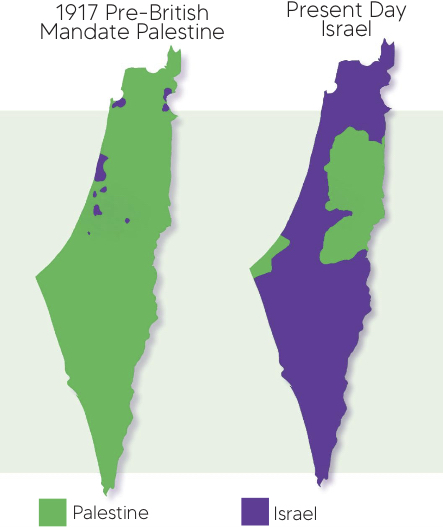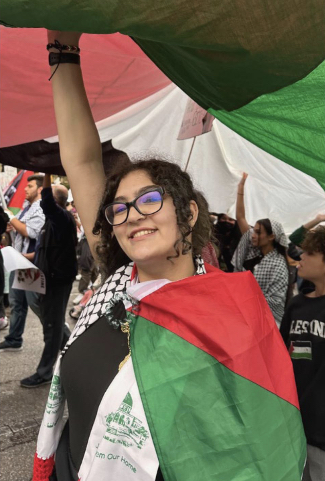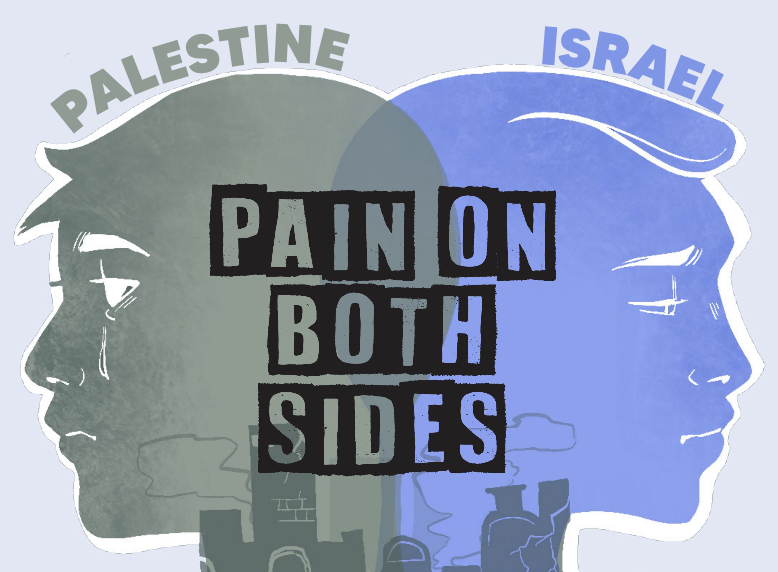Editor’s note: This story, with its accompanying news story and feature story, won third place for in-depth news feature package in the 2024 ILPC contest.
Sophomore Hiba’s father*, a Palestinian, said that Palestine’s history extends very far back.
“Muslims, Christians, and Jewish coexisted for hundreds of years,” he said.
Arabs living in Palestine were under the control of Egyptians in 1834, and they banded together to rebel against unfair taxation and the rights they lost. This is marked by many as the first formation of the Palestinian people.
As World War 1 came to a close in 1917, people of the Middle East scrambled to get back to their old lives, but this would be impossible. The Ottoman Empire, also known as the Turkish Empire, collapsed in this war after their failed attempts to conquer more European countries. The victorious nations of WW1 divided the territories among themselves. Palestine was one of the territories the British conquered.
The Sixth World Zionist Congress discussed an early plan called the Uganda Scheme to move the European Jews to British East Africa. However, after the British government took over Palestine, they issued a public mandate called the Balfour Declaration, supporting the establishment of a home for Jewish people in Palestine instead. The UN ended this mandate 30 years later to enact the Partition Plan, splitting the territory into Israel and Palestine.
“[The British] tried to split up the territory between Arabs and Jews,” Rabbi Geoffrey Dennis said. “It ended up being chaos and war, and the Arab territories tried to prevent the Jewish territory from forming.”
The state of Israel declared their independence in 1948, leading to the first Arab-Israeli war. Israel won this war in 1949, but it resulted in over 750,000 Palestinians being displaced, an event called the Nakba Catastrophe. Tensions remained high between the two groups as they each wanted land.
“It’s been a struggle ever since then to figure out how to resolve that conflict,” Dennis said.
Eventually, two areas of majority Arab population formed: the West Bank and Gaza. Hamas, a group focused on resisting Israel with military force, took control of Gaza in 2007, and they have stayed in power ever since. Israel and Egypt reacted to their take-over by establishing a blockade to prevent the movement of goods and people in and out of Gaza. The blockade has resulted in a scarcity of essential supplies, a lack of electricity, and less accessibility to medical care, with some calling Gaza an open air prison.
*Father’s name withheld upon request
The growth of Hamas
Hamas is descended from the Muslim Brotherhood in Egypt. In the 1970s and ‘80s, they started off as a group focused on religious worship. The Israeli government recognized them as a charity, letting the members set up a community of mosques, schools, and even funding certain endeavors, according to the Washington Post.
However in 1988, Hamas published its charter, outlining that they wanted the destruction of Israel and for Palestine to have an Islamic society, as it historically had. Avner Cohen is a retired Israeli religious official who worked in Gaza for decades. Hewatched this movement form.
“Hamas, to my great regret, is Israel’s creation,” Cohen said to the Wall Street Journal in 2009.
Since the creation of Hamas, Israel has gone to war with them multiple times. Hamas said their goal is “to free Palestinian prisoners, stop Israeli aggression on al-Aqsa Mosque, and to break the siege on Gaza.” Israelis are concerned that Hamas said “Israel will exist and continue to exist until Islam will obliterate it, just as it obliterated others before it.”
Timeline
1896: Theodore Herzl founded the Zionist movement and called for “restoration of the Jewish State”.
1915: British cabinet calls for the British annexation of Palestine.
1917: The Balfour Declaration, a statement issued by the British Government during the First World War promises a “national home for the Jewish people in Palestine”.
1922: The League of Nations formally adopts a British mandate for Palestine. Over the course of their rule, the British helped 100,000 Jews immigrate.
1947: Following the end of World War II, the British mandate ends in Palestine, handing over the conflict to the United Nations. The UN established a plan to divide Palestine into Jewish and Arab states.
1948 – 1949 : Following the creation of Israel, the Nakba (catastrophe in Arabic) takes place. More than 600,000 Palestinians were displaced from their homes, 400 Palestinian villages vanished and over 15,000 Palestinians dead.
1967: The Six Day War began in June when Israel attacked Egyptian and Syrian air forces. This led to Israel occupying the West Bank, East Jerusalem and Gaza which were previously controlled by other countries.
2000 – 2005: A major uprising against Israel which resulted in the West Bank Barrier being created and the removal of Israeli forces from the Gaza Strip.
2006: Hamas government wins the election and takes armed control of the Gaza Strip.
2018: Trump administration announces the U.S. would recognize Jerusalem as the capital of Israel and moves its embassy to Tel Aviv.
2023 – Present
Oct. 7 2023: Hamas launches a surprise attack on Israel killing over 1200 Israelis and taking 220 people hostage.
Oct. 8 – Nov. 20 2023: Israel formally declares a state of war and begins the siege of the northern Gaza Strip. Over the course of a month 15,000 Palestinians were killed, over 6,000 missing and over 1.7 million are displaced.
Nov. 21 2023: The government of Israel votes to approve a deal with Hamas for the exchange of 150 Palestinian prisoners for 50 Israeli hostages along with a four day ceasefire (later extended to seven days).
Dec. 1 2023: Seven day ceasefire formally ends and Israel announces the invasion of southern Gaza.














